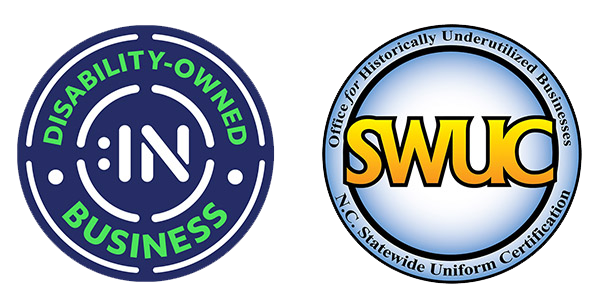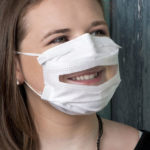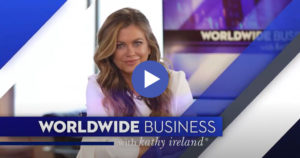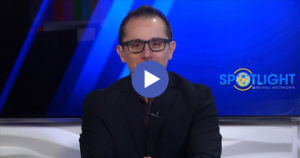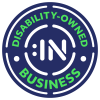How COVID is Affecting Communication
February 10, 2021 2021-06-25 20:03How COVID is Affecting Communication
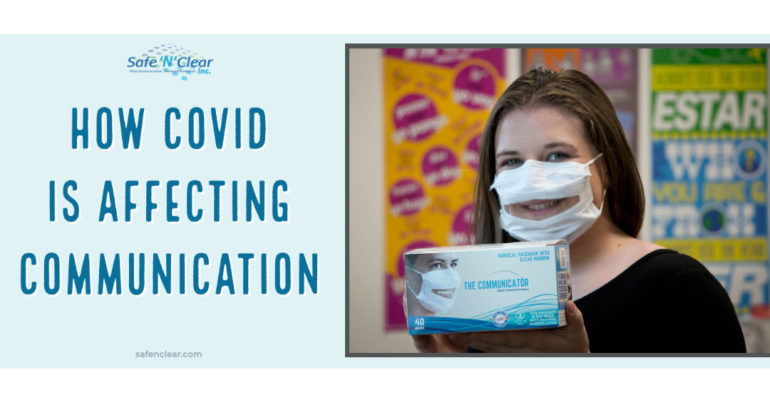
How COVID is Affecting Communication
By Anne McIntosh, Ph.D. and Randi Howell, M.A.
From time to time, people ask me how I am doing with communication during COVID. Truth is,
deaf and hard of hearing people struggle with communication 24/7/365, not just
during a pandemic. Yes, COVID has made communication more challenging; however, those of us for whom deafness is not new, we are adept to figuring out ways to make sure we get access to communication. COVID has shined a spotlight on an issue that deaf and hard of hearing people have been championing for years – clear communication across environments and platforms.
I have read news articles and heard comments on mainstream news that masks impede communication for those with normal hearing levels. In Marcus Woo’s article published on ABCNews.com “Masks save lives but may hinder communication” discusses how conventional masks can muffle high frequencies where consonants are and with masks covering portions of the face and mouth, a lot of facial expressions are lost which people with hearing loss depend on for contextual cues (December 26, 2020).
How COVID-19 has transformed the way we communicate
It has improved communication accessibility in the sense that more meetings are done by video conferencing (Zoom, Google Hangout, Amazon Chime, Skype, WebEx) and many of these video conferencing have captioning capabilities.
Voice recognition software is available and becoming more accurate, such as Ava, Dragon natural speaking, Otter voice meeting notes, in which deaf and hard of hearing can pull out their cell phones and use these translation apps.
On the other hand, COVID has compounded face-to-face communication. Before living in a masked society, face-to-face communication was the preferred mode of communication. Before COVID, the deaf and hard of hearing had the ability to see facial expressions, lip-read, and carry on a conversation. Widespread the use of masks and most masks not transparent, visual cues and the ability to lip-read are completely hidden.
- Those working in business entities, such as restaurant workers, grocery store clerks, postal workers communicate with the public daily but have inadvertently created communication barriers by not wearing transparent face masks.
- Likewise, government officials, such as law enforcement and court facilities are struggling to effectively communicate with the general public.
- Teachers and faculty are in close, confined spaces (perhaps without social distancing) with students and oftentimes, they are teaching from behind a non-transparent mask. Students cannot see their teachers’ faces to help them understand how to interpret what a teacher is saying…English words can be difficult for young children- sarcasm, dry humor, anti-thesis, euphemisms, and facial expressions can help them as they master the complexities of the English language.
Truly, being accessible and inclusive makes good business sense. Driving demand and paying customers to your business, your television network, and your classroom, especially when you are serving needs that other entities are not. You probably know someone who has been personally affected by COVID; likewise, you may know someone who has been affected by deafness as one in every seven Americans has a hearing loss that communication is impacted. For me, the accessibility to communication is a clear decision; either you are part of the solution or part of the problem. I choose to be optimistic and work every day towards creating long-lasting, sustainable solutions that benefit others.
Recently, Worldwide Business with Kathy Ireland highlighted the unique advantage of The Communicator and how the clear window solves the communication problem experienced by many. Watch the replay of Safe’N’Clear, a FOX Business News sponsor, along with Kathy Ireland talking about the efforts to promote clear, concise, and inclusive communication for everyone. We challenge you to be part of the solution!
Purchase Online
Featured Deaf Leader
Recent Articles
